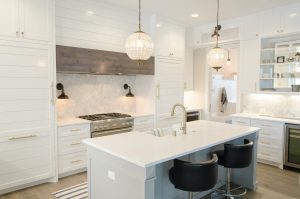Nomadic Living Concepts: Residential Designs for Global Lifestyles
In today’s globalized world, the concept of living is constantly evolving. From fast-paced city life to minimalistic living, people are always seeking new ways to live and thrive. One such emerging trend is nomadic living – a lifestyle that focuses on the freedom to travel and live in different locations. This lifestyle is gaining popularity among individuals and families looking for an alternative to traditional residential designs. In this article, we will explore the concept of nomadic living and how it is shaping the way we think about residential design, specifically in the form of nomadic living concepts for global lifestyles. 
What is Nomadic Living?
Nomadic living is a lifestyle that emphasizes the ability to live and work remotely while traveling to different locations. It is inspired by the traditional nomadic lifestyle of constantly moving from one place to another in search of resources. However, in modern times, nomadic living is not just limited to survival or following a herd. It is a conscious choice made by individuals to explore the world, experience different cultures, and find a sense of freedom from the constraints of a traditional stationary home.
For nomads, home is not a specific place, but a sense of belonging and comfort that they create wherever they go. This means that they must have the ability to adapt and live in different environments, which has led to the rise of nomadic living concepts in residential design.
The Rise of Nomadic Living Concepts in Residential Design
The traditional concept of a home is slowly being redefined by nomadic living, with designers and architects incorporating elements of flexibility, mobility, and adaptability in their designs. These concepts are catering to the needs and desires of the emerging nomadic community, allowing them to create a sense of home on the go.
Flexibility
Nomadic living requires individuals to be able to set up a home in different environments and adapt to different lifestyles. This has led to the integration of flexible design elements in residential spaces. For instance, modular furniture that can be easily dismantled and reassembled, convertible and multi-functional pieces, and collapsible structures that can be packed and transported from one place to another. These design elements not only save space but also allow nomads to customize their living environment as per their needs and preferences.
Mobility
Nomadic living is all about being able to travel to different locations without being tied down by the responsibilities of a traditional home. Hence, mobility is a key factor in nomadic living concepts for global lifestyles. From tiny homes on wheels to container homes, designers are coming up with innovative solutions that provide a sense of permanence and stability while being able to relocate as desired. This also means using materials that are lightweight and easy to transport, while also being durable and suitable for a variety of climates.
Adaptability
Being able to adapt is an essential trait of nomadic living, and this is reflected in the design of residential spaces for nomads. From using sustainable and eco-friendly materials to incorporating technology for efficient living, designers are constantly pushing the boundaries to create adaptable living spaces that can cater to different lifestyles and changing needs. This includes designs that can cater to different cultural backgrounds, climates, and social dynamics, making it easier for nomads to feel at home wherever they go.
The Future of Nomadic Living Concepts
Nomadic living is not just a passing trend; it is a growing movement that is here to stay. With the rise of digital nomads and remote work, more and more people are embracing the idea of living and working while on the move. This has led to a growing demand for innovative residential designs that cater to the needs of this community. In the future, we can expect to see more advanced and sustainable nomadic living concepts that are designed to provide a comfortable and fulfilling lifestyle for global nomads.
Conclusion
Nomadic living is a lifestyle that challenges traditional notions of home and living. The emergence of nomadic living concepts in residential design is a reflection of an evolving nomadic community that is seeking a sense of freedom while exploring the world. With the incorporation of flexibility, mobility, and adaptability, designers are creating nomadic homes that cater to the needs and desires of this growing community. As the trend of nomadic living continues to gain popularity, we can expect to see more innovative and sustainable designs that redefine the idea of “home” for global lifestyles.










